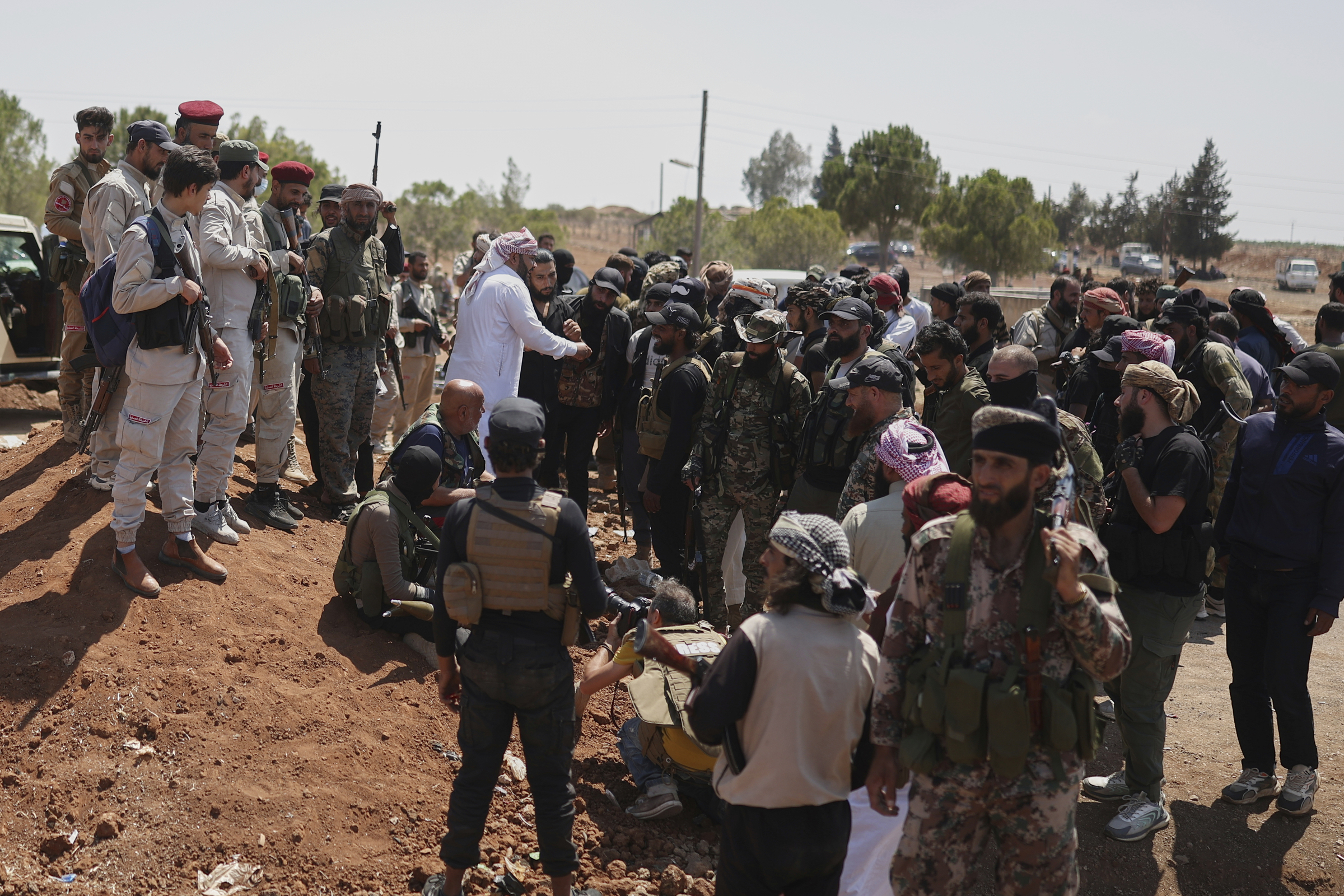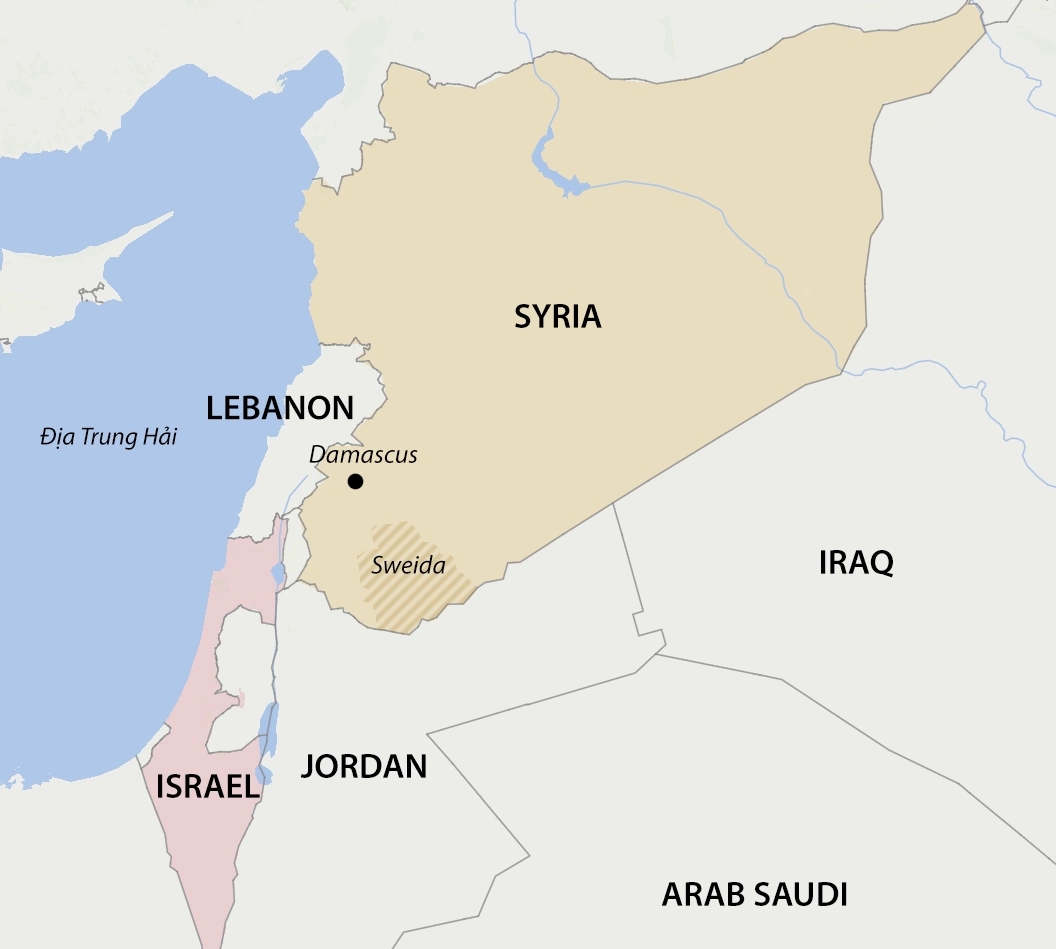Sweida, the capital of the eponymous province in southern Syria, witnessed intense clashes last week between Druze militias, government forces, and Bedouin armed groups.
The conflict stemmed from disagreements between the Druze and Bedouin communities, two historically opposed groups in Sweida. Syria's interim President Ahmed al-Sharaa deployed the army and security forces to the city, coordinating with Bedouin armed groups to attack the Druze militia.
Syrian government forces withdrew from Sweida earlier last week following intense Israeli airstrikes. However, Bedouin forces and Islamic armed groups from across the country continued to converge on Sweida to attack the Druze.
On 20/7, the Bedouin groups reached a US-brokered ceasefire with the Druze and withdrew from the city. However, they maintained a siege around Sweida, trapping 30,000 people in the city and surrounding towns with no electricity, internet, and dwindling food and water supplies.
Around 25 km from Sweida's center, checkpoints and earthworks have been erected. Dozens of Syrian security personnel stand guard in front of mounds of earth and at further points along the main road into the city, preventing vehicles from entering or leaving.
Bedouin fighters, who engaged in fierce battles within Sweida a few days prior, have now withdrawn and blocked all access routes. "We will not give up," one shouted.
 |
Bedouin fighters (right) stand guard as Syrian government security forces (left) prevent them from entering Sweida on 20/7. Photo: AP |
Bedouin fighters (right) stand guard as Syrian government security forces (left) prevent them from entering Sweida on 20/7. Photo: AP
The ceasefire agreement between Druze and Bedouin community leaders has left some disappointed. Some Islamic fighters, with guns slung over their backs, are eager to enter Sweida to continue fighting, but community leaders have ordered them to refrain from any action.
"We are not against the Druze. We did not come here to kill Druze people," Khalaf al Modhi, leader of the United Tribes, a Bedouin group, warned the fighters.
However, Modhi criticized the Druze community's senior cleric, Hikmat al Hijiri, who is currently in Sweida. Hijiri is skeptical of the new government led by interim President Sharaa and opposes granting power to Damascus.
With the Bedouin forces' withdrawal from the city center, the Druze militia under Hijiri's command now controls access in and out of the besieged area.
The humanitarian situation for the tens of thousands trapped in Sweida is worsening daily. No safe passage has been agreed upon by the parties to allow trapped civilians to leave. The United Nations previously estimated that nearly 130,000 people in Sweida have been displaced due to the fighting.
Maintaining the ceasefire is crucial to finding a swift solution to aid the trapped civilians. This represents a major challenge for Syria's new leader and his interim government.
The Druze community, led by Hijiri, deeply distrusts the Syrian government, to the point that Druze leaders refuse aid from any government agency.
Following the clashes, bodies remain strewn across the streets of Sweida, many seemingly executed. Numerous homes and businesses are still burning from the intense fighting.
 |
Location of Sweida province, Syria and Israel. Graphic: WP |
Location of Sweida province, Syria and Israel. Graphic: WP
It remains unclear how long the ceasefire between the Arab Bedouin and their Druze rivals in southern Syria will last.
Since Sharaa overthrew President Bashar al-Assad to take power, ethnic, religious, and factional conflicts have escalated in Syria. Attacks on minority groups by the Syrian army have fueled Druze skepticism towards the new government in Damascus and the prospect of peaceful coexistence in the country.
Ngoc Anh (According to Sky News, AP)












